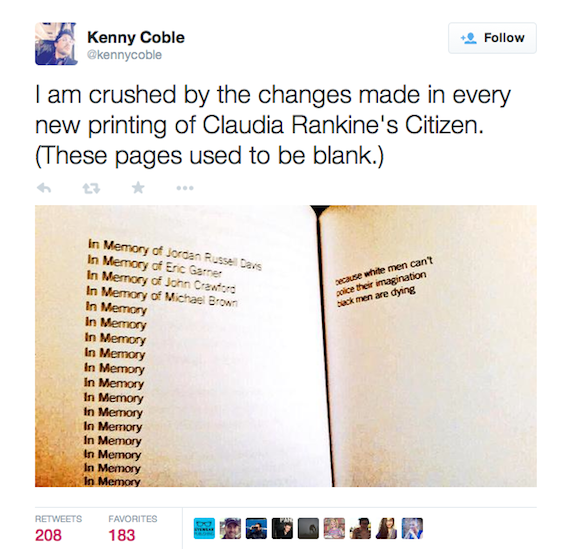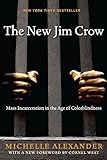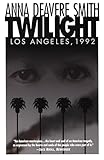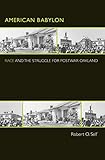
Fifty years from now, Americans may look upon the shooting of Michael Brown in Ferguson, Mo., the same way we look back today on Martin Luther King’s march across the Edmund Pettus Bridge in Selma, Ala., 50 years ago — as a hinge of history, one of those rare flashpoints that shapes a society.
But like the Selma march, the shooting of Michael Brown by white police officer Darren Wilson last August is just one piece of a longer, more complicated story. Violence against black people is hardly new.
With each new report of a black man dying at the hands of a white cop — such as the shooting of Walter Scott in South Carolina last week — we pore over the videotape, argue on social media, and rally around hashtags like #BlackLivesMatter. But too often we lose sight of the broader context of the racism that is so deeply rooted in our history and culture.
Below are nine books, some new, some decades old, that shed light on the history and evolution of racism in America. As the case with any list of this kind, this one is incomplete. We invite readers to add their suggestions for further reading on this topic in the comments section.
Ghettoside, by Jill Leovy
 This fascinating examination of the epidemic of violence in Los Angeles’s poor black neighborhoods grew out of “The Homicide Report,” an interactive database on the Los Angeles Times website that chronicles all murders in L.A. County. Ghettoside follows a single murder investigation headed by a heroically dogged white LAPD detective, but Leovy’s deeper point is far less uplifting. She likens the relentless gun violence in Los Angeles’s black neighborhoods to a “plague,” one caused in large part by the indifference of the outside world. “This book is about a very simple idea,” she writes; “where the criminal justice system fails to respond vigorously to violent injury and death, homicide becomes endemic.”
This fascinating examination of the epidemic of violence in Los Angeles’s poor black neighborhoods grew out of “The Homicide Report,” an interactive database on the Los Angeles Times website that chronicles all murders in L.A. County. Ghettoside follows a single murder investigation headed by a heroically dogged white LAPD detective, but Leovy’s deeper point is far less uplifting. She likens the relentless gun violence in Los Angeles’s black neighborhoods to a “plague,” one caused in large part by the indifference of the outside world. “This book is about a very simple idea,” she writes; “where the criminal justice system fails to respond vigorously to violent injury and death, homicide becomes endemic.”
Leovy’s argument that poor black neighborhoods need more policing rather than less may be a tough sell to those outraged by “stop-and-frisk” tactics and strict enforcement of petty crimes, but this crisply reported book bears out her points about the consequences of the failure to vigorously investigate and prosecute violent crimes. “Like the schoolyard bully,” Leovy writes, “our criminal justice system harasses people on small pretexts, but is exposed as a coward before murder. It hauls masses of black men through its machinery, but fails to protect them from bodily injury and death. It is at once oppressive and inadequate.”
The New Jim Crow, by Michelle Alexander
 Most accounts of the Walter Scott shooting in South Carolina report that Scott had a long history of arrests, most involving his failure to pay child support for his four children. But as Alexander documents in The New Jim Crow, in many major American cities four out of five black men have criminal records — a statistic Alexander believes reflects America’s warped law enforcement priorities during the long-running War on Drugs. A law professor who once headed the ACLU’s Racial Justice Project in Northern California, Alexander argues that an unholy cocktail of strict drug laws, selective enforcement, harsh sentencing rules, and discrimination against ex-cons has created a de facto “racial caste system” that has, in effect, replaced the de jure caste system that ruled in the Jim Crow South.
Most accounts of the Walter Scott shooting in South Carolina report that Scott had a long history of arrests, most involving his failure to pay child support for his four children. But as Alexander documents in The New Jim Crow, in many major American cities four out of five black men have criminal records — a statistic Alexander believes reflects America’s warped law enforcement priorities during the long-running War on Drugs. A law professor who once headed the ACLU’s Racial Justice Project in Northern California, Alexander argues that an unholy cocktail of strict drug laws, selective enforcement, harsh sentencing rules, and discrimination against ex-cons has created a de facto “racial caste system” that has, in effect, replaced the de jure caste system that ruled in the Jim Crow South.
Anyone wanting to understand why a police officer like Michael Slager would be so eager to pull over a black man like Walter Scott driving a Mercedes Benz with a broken tail light would do well to read The New Jim Crow.
The Whites, by Richard Price
 Price has chosen to half-camouflage himself behind the pseudonym Harry Brandt, but no one should be fooled: The Whites is Richard Price at his ballsy, gritty best. The novel, his ninth, is at once a spellbinding exercise in straight-up genre storytelling, and a haunting meditation on the shadowy line between those who uphold society’s laws and those who break them.
Price has chosen to half-camouflage himself behind the pseudonym Harry Brandt, but no one should be fooled: The Whites is Richard Price at his ballsy, gritty best. The novel, his ninth, is at once a spellbinding exercise in straight-up genre storytelling, and a haunting meditation on the shadowy line between those who uphold society’s laws and those who break them.
The “whites” of the title are not white people, but murderers who escape justice and live free while the cops who know their guilt continue to pursue them like so many badge-wielding Captain Ahabs. The novel turns, brilliantly, on the moral quandary of how men sworn to seek justice should view those who have slipped through the cracks of the criminal justice system. At the same time, Price, a world-class reporter who happens to write fiction, puts readers inside the minds of New York City cops who serve as the sharp end of the spear of society’s often invisible war against the poor, the luckless, and the depraved.
Citizen: An American Lyric, by Claudia Rankine
 This book-length poem aims to document not just the instances of intentional and unintentional racism described in Rankine’s poetry, but the ongoing tide of violence against black men. In its first edition, which went to press in the summer of 2014, Citizen includes the following note: “November 23, 2012/In Memory of Jordan Russell Davis,” reflecting the date that the 17-year-old black man was murdered by a white man after an altercation over loud rap music at a gas station in Florida. A second printing, which went to press in September 2014, was updated to memorialize the shooting of Michael Brown in Ferguson, Mo. A third printing, completed in November, not only adds to the list the names of two more slain black men, Eric Garner and John Crawford, but includes a long column of the words “In Memory of,” each left blank, presumably to be filled in with the names of black men whose violent deaths have not yet occurred.
This book-length poem aims to document not just the instances of intentional and unintentional racism described in Rankine’s poetry, but the ongoing tide of violence against black men. In its first edition, which went to press in the summer of 2014, Citizen includes the following note: “November 23, 2012/In Memory of Jordan Russell Davis,” reflecting the date that the 17-year-old black man was murdered by a white man after an altercation over loud rap music at a gas station in Florida. A second printing, which went to press in September 2014, was updated to memorialize the shooting of Michael Brown in Ferguson, Mo. A third printing, completed in November, not only adds to the list the names of two more slain black men, Eric Garner and John Crawford, but includes a long column of the words “In Memory of,” each left blank, presumably to be filled in with the names of black men whose violent deaths have not yet occurred.
On the facing page, Rankine has tacked on a brief haiku-like epigraph:
because white men can’t
police their imagination
black men are dying
Twilight: Los Angeles, 1992, by Anna Deveare Smith
 For her one-woman plays, Twilight and Fires in the Mirror, Smith interviewed hundreds of people involved in two of the most combustible race riots of the 1990s — the Rodney King riots of 1992 in L.A. and Brooklyn’s Crown Heights riots in 1991. Then, with a few simple props, Smith impersonated the people she had met, using verbatim excerpts from her interviews to create a theatrical documentary seeking to make moral sense of these explosions of racial violence.
For her one-woman plays, Twilight and Fires in the Mirror, Smith interviewed hundreds of people involved in two of the most combustible race riots of the 1990s — the Rodney King riots of 1992 in L.A. and Brooklyn’s Crown Heights riots in 1991. Then, with a few simple props, Smith impersonated the people she had met, using verbatim excerpts from her interviews to create a theatrical documentary seeking to make moral sense of these explosions of racial violence.
On the page, Smith distills her characters’ words into a kind of loose poetry, which has literary merit in its own right, but so much of the richness of the plays owes to her performance. I saw her perform Twilight in San Francisco in the mid-1990s, while the O.J. Simpson trial was still on TV every day, and the experience has stayed with me. A light-complected black woman with an infinitely malleable body and voice, Smith could plausibly embody everyone from Los Angeles Police Chief Daryl Gates to a gang member, creating a searing indictment of racism in America while also bearing witness to the human capacity to transcend race and social class. She created a film version of the play in 2000, under the direction of Marc Levin.
“Sentimental Journeys” from After Henry, by Joan Didion
 This essay about New York’s infamous Central Park Jogger case, which first appeared in The New York Review of Books in 1991, is a tart, tough-minded examination of the power of the public imagination to convict young black men of crimes they did not commit. In April 1989, a young white investment banker was raped and left for dead after she was waylaid while jogging at night across Central Park. Five teenagers, four of them black, and one Hispanic, “confessed” to the crime, though, tellingly, none admitted raping the woman, claiming instead that they helped hold the woman down while others raped her.
This essay about New York’s infamous Central Park Jogger case, which first appeared in The New York Review of Books in 1991, is a tart, tough-minded examination of the power of the public imagination to convict young black men of crimes they did not commit. In April 1989, a young white investment banker was raped and left for dead after she was waylaid while jogging at night across Central Park. Five teenagers, four of them black, and one Hispanic, “confessed” to the crime, though, tellingly, none admitted raping the woman, claiming instead that they helped hold the woman down while others raped her.
In her essay, Didion documents how the tale of a rabid gang of black teenagers — early tabloid headlines labeled them a “Wolf Pack” — setting upon an educated white woman fit the public narrative of a city out of control, overwhelming any discussion of the holes in the prosecution’s case. Sharp reporter that she is, Didion also shows how some in New York’s black community sought to demean the victim, claiming she had a black boyfriend and had gone into the park looking for sex. In 2002, another man confessed to the crime, and after DNA evidence confirmed his claims, the original convictions were vacated, though all five defendants had already served out their sentences.
The Hemingses of Monticello: An American Family, by Annette Gordon-Reed
 No story better illustrates the deep strangeness of the relationship between powerful white Americans and the black people under their control more fully than that of President Thomas Jefferson and his slave Sally Hemings, the mother of six of his children. Gordon-Reed nearly single-handedly put an end to two centuries of scholarship that had held that Jefferson could not have been the father of Hemings’s children — a line of argument that collapsed in 1998 under the weight of decisive DNA proof that Jefferson had indeed fathered Hemings’s children, four of whom lived to adulthood.
No story better illustrates the deep strangeness of the relationship between powerful white Americans and the black people under their control more fully than that of President Thomas Jefferson and his slave Sally Hemings, the mother of six of his children. Gordon-Reed nearly single-handedly put an end to two centuries of scholarship that had held that Jefferson could not have been the father of Hemings’s children — a line of argument that collapsed in 1998 under the weight of decisive DNA proof that Jefferson had indeed fathered Hemings’s children, four of whom lived to adulthood.
But the Jefferson-Hemings saga is so very much weirder than the mere fact that a sitting American president had a black concubine. Sally Hemings was herself the child of a slave, Betty Hemings, and a white planter, John Wayles, who was also the father of Martha Wayles, the first and only wife of Thomas Jefferson. Before she died, Martha made Jefferson promise never to marry again, and he honored this pledge by carrying on a decades-long affair with her half-sister, who by all accounts, looked remarkably like Martha Jefferson.
The Mind of the South, by W.J. Cash
 Anyone looking for a single, book-length examination of the conservative, white racial imagination need go no further than this 1941 classic. Published months before Cash’s death under murky circumstances in Mexico, The Mind of the South offers a scorching view of the damage done to the mind of a people whose power, which they view as theirs by birthright, is threatened by the march of progress.
Anyone looking for a single, book-length examination of the conservative, white racial imagination need go no further than this 1941 classic. Published months before Cash’s death under murky circumstances in Mexico, The Mind of the South offers a scorching view of the damage done to the mind of a people whose power, which they view as theirs by birthright, is threatened by the march of progress.
Among the shocks of reading The Mind of the South is how readily Cash’s portrait of the political belief systems of the post-bellum American South fits with those of the more extreme elements of today’s Republican Party. It’s all there: the evangelical religiosity, the veneration of violence and militarism, the preference of morality over law, the distrust of science and rational self-criticism. One sees in politicians like President George W. Bush and Texas Governor Rick Perry features of the figure Cash calls “the hell of a fellow” — a friendly guy who is not outwardly brainy, but deeply moral, religious, and fervently patriotic.
American Babylon, by Robert O. Self
 Self, a history professor at Brown, is an academic, and writes like one, so this book is not for the Sunday browser, but I know of no more penetrating a study of how institutional racism actually works than this history of black Oakland, Calif., and the rise of the Black Panther Party. The sleepy port city of Oakland, once known in Gertrude Stein’s famous formulation as the place where “there is no there there,” became a magnet for poor black Southerners drawn to steady work in the city’s shipyards during the Second World War. But after the war, the shipyard jobs evaporated, leaving black Oakland residents stranded in poverty while the surrounding municipalities attracted factories employing middle-class white workers living out the California dream.
Self, a history professor at Brown, is an academic, and writes like one, so this book is not for the Sunday browser, but I know of no more penetrating a study of how institutional racism actually works than this history of black Oakland, Calif., and the rise of the Black Panther Party. The sleepy port city of Oakland, once known in Gertrude Stein’s famous formulation as the place where “there is no there there,” became a magnet for poor black Southerners drawn to steady work in the city’s shipyards during the Second World War. But after the war, the shipyard jobs evaporated, leaving black Oakland residents stranded in poverty while the surrounding municipalities attracted factories employing middle-class white workers living out the California dream.
Self’s achievement is to explain how pervasive racism can exist when no one appears to be actively discriminating against anyone. Northern Californians did not need to slap “Whites Only” signs over swimming pools and water fountains, or ride out at night wearing white sheets. They needed only to build factories far from the homes of black workers in Oakland, and then design a public transportation system that made it difficult for those black workers to reach the distant white suburbs. They needed only to pass a property tax law — known as Proposition 13 — which made it easier for white homeowners to pay off their mortgages but slashed government aid to impoverished black renters in the inner city.








